Page 1 of 2
Planet b around proxima centauri !
Posted: 24.08.2016, 20:42
by Cham
Posted: 24.08.2016, 20:59
by omega13a
I already posted about this in the Physics/Astronomy forum but I agree, someone needs to make this add-on ASAP.
Posted: 24.08.2016, 21:06
by Cham
I'm pasting a template here. Currently, I don't have time to make it all yet.
Code: Select all
"b" "Proxima"
{
Texture "asteroid.jpg"
Mass ?? # M.sin(i) = ?? earths
Radius ??
EllipticalOrbit {
Period ??
SemiMajorAxis ??
MeanLongitude ??
Inclination ??
}
UniformRotation {
Period ?? # hours
Inclination ??
AscendingNode ??
MeridianAngle ??
}
}
Posted: 24.08.2016, 21:16
by omega13a
Here's the details for the planet that I could find:
https://en.wikipedia.org/wiki/Proxima_Centauri#Planetary_systemUnfortunately, it doesn't include inclination and mean longitude and the radius is a guess based on the assumption its composition is similar to the Earth...
Posted: 24.08.2016, 22:16
by SVision
Cham wrote:We already need to make an addon for this ! This is too great to miss in Celestia !
Cham wrote:I'm pasting a template here. Currently, I don't have time to make it all yet.
OK Cham. Here is my version of the add-on as a super Mars.




Code: Select all
"Uncifomied b:b" "V 645 Cen"
{
Texture "MarsType.*"
NormalMap "MarsTypeNormal.*"
Radius 7821#=1.23 RE.Super Mars type
Mass 2.00
#AbsMag 38.36#Mayde
InfoURL "https://palereddot.org/"
BodyFrame { EclipticJ2000 {} }
EllipticalOrbit {
Period 0.03469 #=12.671 d
SemiMajorAxis 0.06#8976000 km
Eccentricity 0.0
#OV 51.5
}
Atmosphere
{
Height 400
Lower [ 0.8 0.6 0.6 ]
Upper [ 0.7 0.3 0.3 ]
Sky [ 0.83 0.75 0.65 ]
Sunset [ 0.7 0.7 0.8 ]
CloudHeight 50
CloudSpeed 156
CloudMap "15h-clouds.*"
Mie 0.0001
MieAsymmetry -0.1
Rayleigh [ 0.007 0.007 0.008]
MieScaleHeight 20
}
RotationPeriod 14.00
}Did I have it another 5 June this year based on
Pal Red Dot data. It seems not bad but I think not very believable, and so I will change after the release of this addon exoplanet transit. And that's why:
Although I doubt that will give life to
Proxima Cen b . The star is very active and probably life can kill by radiation. Personally, I think the last time the world analogue of Venus

. In any case, we should wait for the new results and even 100% sure that this planet is real, and the stars activity or even a glitch instruments such as unfortunately is often the case repeatedly. For example
A Cen Bb .
Added after 5 minutes 17 seconds:And in any case, I still have a long time to work on this world. I described how it in
Russian forum that incorrectly calculated the period taking as a basis the signal 12,671 days, but in fact it is not. Moreover, in reality, the planet will likely ebb in sync which is not in my case.
Added after 16 minutes 14 seconds:Probably it oftop although also to some extent to have planetary systems rendering red and orange dwarfs later. But I want to get rid of it in the Celestia improbable pinkish hue. How can I do that ?

Posted: 24.08.2016, 23:45
by omega13a
But it is still exciting to have something so close to our solar system. At best I think it would probably be home to extrememophiles.
Posted: 25.08.2016, 00:13
by Chuft-Captain
I heard that it is home to a species of 9ft tall war-mongering cats.

Posted: 25.08.2016, 05:40
by SVision
omega13a wrote:At best I think it would probably be home to extrememophiles.
It is this and really would like to, but alas, most likely in reality it is a lifeless desert. I still doubt the life of the chromospheric activity of red dwarfs. It's like living next to a nuclear bomb

. But in any case this is a very important discovery for us.
We now know that in fact, the world has almost all the stars and more likely to find in one way or another star of the terrestrial planets in the habitable zone (assuming that the system no gas giants on the inner orbits). By the way. By the way candidates falls and Alpha Centauri A .Here is
interesting recent information on the (possible) the evolution of the Alpha Centauri A system

Posted: 25.08.2016, 07:09
by nardo
here's what i'm currently using, if you're interested.
Code: Select all
"Proxima b:b" "Proxima"
{
Texture "asteroid.*" # light from proxima makes a good "cooked on one side" effect
Radius 7008.1 # at least 1.1 earth radii
EllipticalOrbit
{
Period 0.03062560 # 11.186 days
SemiMajorAxis 0.05 # AU
Eccentricity 0 # <.35
Inclination 0 # unknown, most likely doesn't cross star
}
BodyFrame # most likely tidally locked
{
TwoVector
{
Center "Proxima/b"
Primary
{
Axis "x"
RelativePosition { Target "Proxima" }
}
Secondary
{
Axis "y"
RelativeVelocity { Target "Proxima" }
}
}
}
}
Posted: 26.08.2016, 00:01
by John Van Vliet
planets and moons use different units
AU vs Km
earth years VS earth days
some builds can use a < diffination > but i have not used that
Code: Select all
"B" "Proxima Cen"
{
Class "planet"
Texture "4k.basergb4.png"
NormalMap "4kNorm.png"
SpecularTexture "4k.basespec.png"
SpecularColor [ 0.25 0.2 0.2 ]
SpecularPower 12.0
#Mass 2
Radius 6800
Oblateness 0.01
Atmosphere {
Height 60
Lower [ 0.65 0.55 0.5 ]
Upper [ 0.7 0.5 0.5 ]
Sky [ 0.8 0.4 0.6 ]
Sunset [ 1.0 0.5 0.25 ]
CloudHeight 30
CloudSpeed 930
CloudMap "Cloud1234.png"
Mie 0.001
MieAsymmetry -0.25
Rayleigh [ 0.004 0.0025 0.002 ]
MieScaleHeight 12
}
EllipticalOrbit {
Eccentricity 0.35
AscendingNode 1
SemiMajorAxis 0.0485
ArgOfPericenter 1
MeanAnomaly 1
Inclination 40
Period 0.0306
}
UniformRotation
{
Period 177 #hours
Inclination 38
AscendingNode 15.0
MeridianAngle 0.0
}
}
the textures are 2k reduced size
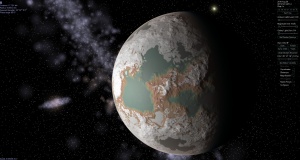
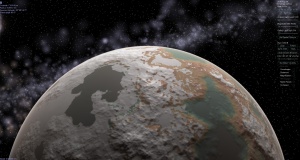
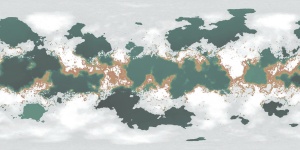
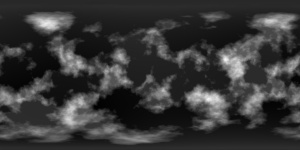
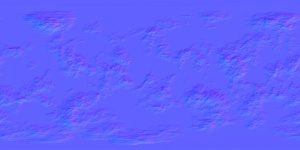
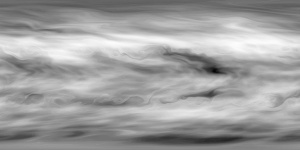
Posted: 26.08.2016, 00:36
by omega13a
Here's the SSC stuff for the planet based on what data I've been able to find.
Code: Select all
"b" "Proxima"
{
Texture "venuslike.jpg"
Mass 1.3 # M.sin(i) = ?? earths
Radius 7143.51344
EllipticalOrbit {
Period 0.03063604704645508903
SemiMajorAxis 0.0485
Eccentricity 0.35
MeanLongitude 310
Inclination 0
}
UniformRotation {
Period 179.04 # Given its eccentric orbit, it probably has a spin/orbit resonance like Mercury
Inclination 0
AscendingNode 0
MeridianAngle 310
}
}
Posted: 26.08.2016, 01:00
by Cham
omega13a wrote:Here's the SSC stuff for the planet based on what data I've been able to find.
Geez ! The precision of the Radius and Period is absurd !

Posted: 26.08.2016, 04:05
by omega13a
Cham wrote:Geez ! The precision of the Radius and Period is absurd !

What can I say? I like things to be exact.

Posted: 26.08.2016, 11:33
by Cham
omega13a wrote:What can I say? I like things to be exact.
This isn't exact at all. It is just the illusion of precision. Scientifically, this is pure non-sense ! You should learn the proper significant digits to get something valuable:
https://en.wikipedia.org/wiki/Significant_figures
Posted: 26.08.2016, 16:08
by John Van Vliet
sig figs
learned them in high-school chemistry
Posted: 28.08.2016, 17:46
by PlutonianEmpire
You and me both, Omega. :) I quite dislike rounding, especially in science. My personal preference is 6 places past the decimal point. Better than 12.34, for example. :)
Posted: 28.08.2016, 18:40
by John Van Vliet
6 places
but what if the error bars only give you 1 or 2 sig figs
1.2
1.23
1.234
1.2345
that 1.2 IS!!!! the MOST important number in the list ( it is NOT!! 1.20 )
now i am NOT being a prof. or TA here ( my nephew now IS a prof.!!! yhaa !, assistant prof. but getting there )
so i have never forced 100% exact numerical presentation
but some common sense here please
even the numbers i place in the spice ssc's have TOO MANY places
-- it is easier to "copy / paste" ( 4.698342892808841E-03 ) form horizons
or use a non edited value in a perl script without converting it to 0.004698
i would need to check the source code but i believe a float with 8 places is used to calculate the orbits
Posted: 28.08.2016, 20:36
by PlutonianEmpire
After reading your post and skimming the article on sig figs, I definitely need to relearn sig figs and scientific notation.

Posted: 28.08.2016, 21:09
by selden
When displaying many objects (for example, stars in a cluster) if you provide only the minimum valid precision, then they'll seem to align with one another in sheets or on a grid, which is itself very non-physical. The additional digits can be used to provide a random displacement for each of the objects so those alignments don't happen.
Posted: 28.08.2016, 22:28
by omega13a
selden wrote:When displaying many objects (for example, stars in a cluster) if you provide only the minimum valid precision, then they'll seem to align with one another in sheets or on a grid, which is itself very non-physical. The additional digits can be used to provide a random displacement for each of the objects so those alignments don't happen.
I've lost track of how many add-ons have that problem (including many of my early ones) but its only noticeable for objects that have a long orbital period.





 . In any case, we should wait for the new results and even 100% sure that this planet is real, and the stars activity or even a glitch instruments such as unfortunately is often the case repeatedly. For example A Cen Bb .
. In any case, we should wait for the new results and even 100% sure that this planet is real, and the stars activity or even a glitch instruments such as unfortunately is often the case repeatedly. For example A Cen Bb .








